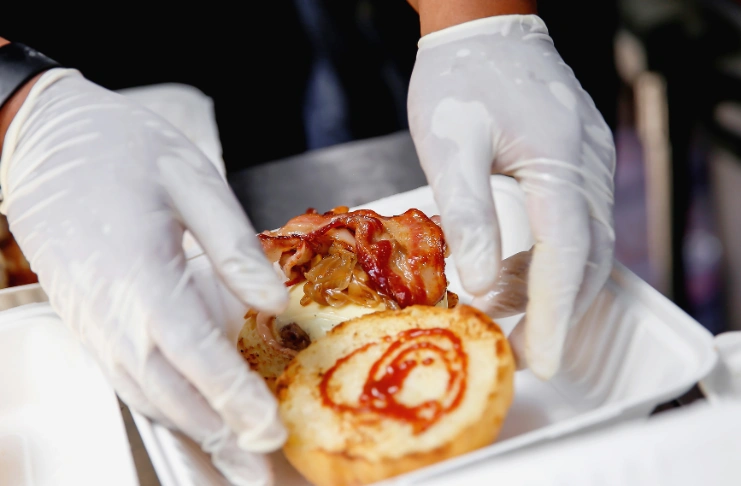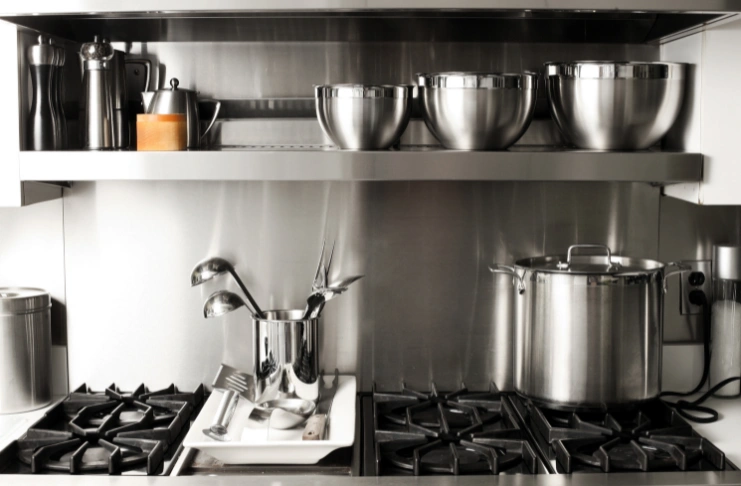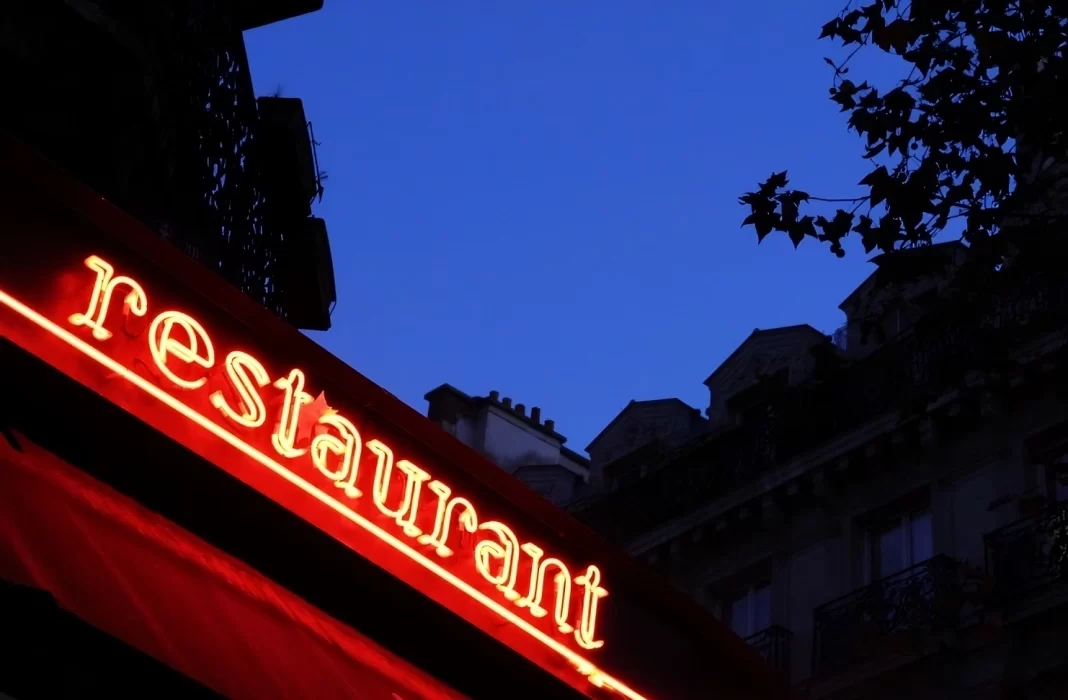London’s dining scene is cutthroat. Here, you don’t just compete with 15,000 other restaurants. You compete with dining habits, delivery apps, razor-thin margins, and rising operating costs.
Still, there’s a reason new restaurants keep opening. The city attracts over 20 million tourists each year, and nearly 9 million locals eat out regularly. The market is still worth £105.3 billion and growing.
So, if you’re serious about opening a restaurant in London, you need a vision and a plan. And this guide offers precisely that. Here’s how to open a restaurant in London and make it work.
Step 1: Finalise Your Restaurant Type and Concept
Before you begin the registration process, clarify what kind of restaurant you want to open. This will affect everything from your business plan, budget, and licences to the location you choose.
Choose a Restaurant Type
Are you going for a fine-dining restaurant, a fast-casual setup, or a delivery-only kitchen? Your restaurant type shapes your customer base, menu pricing, kitchen size, staffing needs, and layout.
Here are some standard formats:
- Fine dining: High upfront investment, premium ingredients, and experienced head chefs. You’ll need strong financial planning and an ideal restaurant location to stand out.
- Casual dining or café: Less expensive to launch, easier staffing, quicker table turnover. Works well in busy footfall areas or near offices.
- Quick-service or takeaway: Lower seating requirements and rent. Focus on speed, pricing, and online ordering.
Know your customer
Your concept should fit the lifestyle and spending habits of the area. A small plates bar may thrive in Soho, while a family-friendly Italian might do better near suburban schools or parks. Build a concept that speaks directly to those living and working nearby.
Plan for long-term operations
Your concept should hold up over time. Ask yourself:
- Can this concept survive seasonal dips or economic shifts?
- Will this attract repeat business or just walk-ins?
- Does this allow for scalability or franchising in the future?
Take the time to map this out. A clear concept now avoids costly changes later.
Step 2: Do Market Research and Location Analysis

Market research forms the backbone of any restaurant business plan. Skip it and you’re flying blind in one of the world’s most competitive food cities. Here’s what you should do:
Study Your Competition
Look at what similar restaurants are doing in your chosen area. Identify their price points, customer base, and online reviews. This tells you what works, what’s missing, and how to offer something better.
Ask:
- What’s the dominant restaurant type nearby?
- Are they doing well? Why or why not?
- Is there a gap in the market you can fill?
Use local directories like OpenTable or Google Maps for an initial scan. Then visit in person. Talk to locals. See when they’re busy and when they’re not.
Understand Local Dining Trends
London trends shift fast. Yesterday, people wanted plant-based menus; today, they want upscale street food. Keep an eye on consumer behaviour reports from sites like Lumina Intelligence or Statista. This will help you match your offer to what people actually want to eat.
Pick the Right Restaurant Location
Location affects rent, footfall, and even your food safety inspections. Don’t just chase a postcode; look at:
- Day and night footfall
- Nearby schools, offices, and transport
- Street visibility and signage opportunities
- Competitor density
- Delivery radius if using online ordering
Avoid low-rent traps where there’s no demand. Sometimes, higher rent may equal higher revenue.
Step 3: Create a Practical Restaurant Business Plan
Your business plan is your roadmap. It defines your restaurant’s concept, startup costs, ongoing operating costs, revenue model, customer base, and long-term goals. More importantly, it helps you control costs and attract investors or bank loans.
Write the plan like you’re presenting to someone who doesn’t know food, but knows money. Keep it lean, specific, and grounded in reality.
Include:
- Restaurant concept and type: Will it be a fine dining restaurant, a café, or a casual diner? What’s your cuisine? Who’s your customer?
- Market research findings: Use real data to back your location and menu choices.
- Financial planning: Break down one-off costs (rent, deposits, fit-out, kitchen equipment) and operating costs (staff wages, utility bills, stock, music licence, waste disposal).
- Marketing strategy: How will you reach people? Will you use online ordering, social media, local events, or PR?
- Staffing plan: Head chefs, line cooks, FOH, and cleaners. Estimate salaries based on local rates.
- Customer experience strategy: Consider the restaurant’s appearance, table layout, noise control, lighting, and service flow—these drive repeat business.
Use a restaurant business plan template if needed. Just don’t rely on fluff or projections you can’t justify. Realistic figures beat optimism.
Remember: A business plan isn’t just for raising funds. It helps you spot risks, budget carefully, and define your version of a successful restaurant business.
Step 4: Understand Your Financial Requirements

Opening a restaurant in London demands serious money. The numbers can shock you, but realistic financial planning prevents nasty surprises later.
Startup Costs Breakdown
Your initial outlay covers everything needed to open your doors. Here’s what to expect:
Property costs eat the biggest chunk. Expect £10,000-£50,000 for deposits alone, plus legal fees around £2,000-£5,000. Then there’s rent between £3,000 and £15,000 monthly, depending on location.
Kitchen equipment costs £15,000-£40,000 for a basic setup. Professional ovens, fridges, prep tables, and dishwashers add up fast. Don’t forget the point of sale system that would need an extra £1,000-£3,000.
Interior renovations vary widely depending on the space’s condition. A simple refresh might cost £20,000, while a full gut renovation can cost £100,000 or more.
Licensing and permits seem small but matter. Budget £2,000-£8,000 for all permits, from food business registration to music licence fees.
Working capital keeps you afloat during the slow early months. Set aside enough to cover three months of operating costs, usually £30,000-£60,000.
Operating Costs
Monthly expenses determine whether you sink or swim. Restaurant industry standards suggest:
Staff costs should stay under 35% of revenue. London’s tight job market means competitive wages for decent staff.
Food costs typically account for 28-35% of sales. Higher-end restaurants can push this to 40% if they charge accordingly.
Rent shouldn’t exceed 8-12% of revenue. This is where many new restaurant owners get burned. They fall in love with expensive locations that kill profit margins.
Everything else (utility bills, insurance, waste disposal, marketing) adds another 10-15%.
Securing Funding
Most restaurant owners combine multiple funding sources. Bank loans offer the cheapest money if you qualify. Expect banks to want a 25-30% down payment plus a strong credit history.
Business loans specifically for hospitality exist, but they cost more. They understand restaurant cash flow better, though.
Private investors bring money and often experience, but you’ll give up equity and control.
Government grants are rare but worth researching. Some councils offer small business support in specific areas.
Step 5: Register Your Food Business with the Local Council
You must register your food business with your local council at least 28 days before you start trading. This applies whether you’re running a new restaurant, café, takeaway, or even a home-based catering setup.
The food business registration process is free. It doesn’t require approval. You simply notify the authorities of your intent to serve food.
You can register online through your local authority’s website. Ensure the details you submit match those in your business plan, especially the restaurant’s premises address and ownership structure.
Once registered, a local environmental health officer will visit your site for a routine inspection to ensure food safety compliance. They’ll assess hygiene practices, pest control, fire safety readiness, food storage, and layout.
Failure to register your food business before opening can result in heavy court fees, forced closure, or legal action.
If your restaurant has multiple locations, you must register each site separately with the relevant local authorities.
Keep a copy of your registration confirmation. You may need it later when applying for licences or dealing with suppliers.
Step 6: Understand Food Safety and Hygiene Requirements

Once your food business is registered, you’re legally responsible for ensuring food safety throughout your operation. This includes sourcing, storing, preparing, and serving food.
Start by learning the Food Safety Act 1990, which underpins all food law in the UK. It holds business owners accountable for serving safe and accurately described food.
You also need to comply with health and safety regulations and hygiene regulations. These cover everything from personal hygiene and waste disposal to pest control regulations and fire safety.
Your kitchen must have adequate procedures to prevent contamination. These include colour-coded chopping boards, handwashing stations, correct food storage, and proper cooking temperatures.
Train your team. All staff who handle food must receive Level 2 Food Hygiene Training at a minimum. Head chefs and supervisors may need Level 3.
The Food Standards Agency (FSA) recommends documenting food deliveries, cleaning schedules, allergen tracking, and temperature logs. This protects you in the event of an inspection.
When you’re confident in your setup, request a food hygiene inspection from your local council. You’ll be graded under the Food Hygiene Rating Scheme (FHRS). Many diners now check this before booking a table.
Step 7: Apply for the Right Licences and Permits
Opening a restaurant in London requires multiple legal approvals. First, you’ll need a premises licence if you want to sell alcohol, play recorded music, or host live performances. You can apply for this through your local council. You must also name a Designated Premises Supervisor (DPS) who holds a valid personal licence.
If you plan to play music, a music licence from PPL PRS is also necessary. It covers both background music and special event playlists. Without it, you risk penalties even if you’re streaming songs.
To serve food past 11 PM, you’ll need a late-night refreshment licence.
If your restaurant type includes outdoor seating, apply for a pavement licence. And if you’re altering the exterior or changing use of the premises, you’ll need planning permission and may require building regulations approval depending on the changes.
All applications vary slightly by borough, but the basics remain the same. Check with your local authorities for timelines and documentation.
Step 8: Meet Building Regulations
Building regulations ensure your restaurant meets safety standards. Unlike planning permission, these focus on technical compliance rather than community impact. Key compliance areas you must consider are:
Fire safety: You need adequate exits, detection systems, and emergency lighting. Commercial kitchens may have additional requirements for suppression systems.
Ventilation: Inadequate extraction creates problems with neighbours and environmental health.
Accessibility: It ensures all customers can use your restaurant. This means wheelchair access, accessible toilets, and appropriate signage.
Major alterations usually trigger building regulations approval. Installing commercial kitchens, changing structural elements, or adding extraction systems typically requires sign-off.
Minor changes might not need formal approval, but you’re still responsible for compliance. When in doubt, check with building control.
Mind that architects and building engineers understand the regulations and navigate approval processes better. Their fees seem expensive upfront, but prevent costly mistakes later. Consider consulting with one.
Step 9: Get Proper Insurance Coverage

Restaurant insurance protects against risks that could otherwise put you out of business, be it fire, lawsuits, equipment failure, or theft are real threats.
Core Policies Every Restaurant Needs
Public liability insurance: It protects you if a customer is injured on your premises. If someone slips on a wet floor or suffers from food poisoning, this policy covers legal fees and compensation. A minimum of £2 million coverage is typical, though £5 million is often recommended for higher footfall locations.
Employers’ liability insurance is legally required if you hire staff. It covers workplace injuries, health-related claims, and legal costs. Without it, you face steep penalties.
Property insurance covers your physical assets: building, furniture, kitchen equipment, signage, and stock. It compensates for damages caused by fires, floods, vandalism, and theft.
Business interruption insurance compensates for lost income if your restaurant is forced to close temporarily due to an insured event. This includes covering rent, payroll, and ongoing operational costs during downtime.
You may also consider:
Product liability insurance: It is essential if you sell takeaway or delivery food. If a customer claims illness or injury from your food, even when you’re not clearly at fault, this policy helps cover legal costs and settlements.
Cyber liability insurance is increasingly important for restaurants using online ordering systems or digital payment platforms. It covers data breaches, ransomware attacks, and system failures that can disrupt operations or compromise customer data.
Equipment breakdown insurance: It covers the cost of repairing or replacing vital kitchen appliances. A failed refrigerator or oven during peak hours can cause major losses. This policy helps minimize downtime and protect service quality.
Legal expenses insurance helps with disputes involving suppliers, employees, or customers. It covers solicitor fees, court costs, and compensation orders related to employment disputes or contract issues.
Money cover insurance protects against theft or loss of cash on premises or in transit to the bank. If you handle large amounts of cash, this is critical.
How to Choose the Right Coverage
Work with a specialist hospitality insurer who understands the complexity of restaurant operations. They can help tailor coverage to your business model.
Review policy exclusions carefully. Some cheaper policies exclude common risks like flood damage or limit claim amounts.
Prioritise insurers known for fast, fair claims handling. Read independent reviews and ask for references from other restaurant owners.
Get written documentation for every coverage detail, and have your broker explain the claims process. Ensure that premiums, deductibles, and payout conditions are clearly understood by your management team.
Important: Reassess your insurance annually or when making significant changes such as expanding your location, hiring more staff, or upgrading equipment. Coverage that was sufficient at launch may not reflect your new risk profile.
INDUSTRY INSIGHT
| According to UK government insolvency statistics, food & hospitality business failures rose 16% in the year to July 2024. That’s 3,822 closures, up from 3,292 the year prior – equivalent to more than 10 restaurants or hotels folding every day. Saxon Moseley, head of leisure and hospitality at RSM UK, says mid-market venues are under sustained pressure from “rising wage costs, food inflation and high interest rates,” with little consumer spending to offset the impact. Even summer trading (a seasonal bright spot for most restaurants) fell short due to poor weather and low consumer confidence. New operators entering the market must think beyond opening day. With more and more banks holding interest rates at over 5% and a potential wave of autumn tax hikes ahead, insurance and financial resilience are the baseline for survival. |
Step 10: Design Your Restaurant Layout
Your layout directly impacts both the customer experience and how efficiently your team can operate. Start by allocating space according to your restaurant type. Quick-service venues can operate with tighter seating, while full-service and fine dining require more space per guest.
A standard guideline is to dedicate 35 to 40 percent of the total area to the kitchen, 45 to 55 percent to dining, and the remaining space to storage, restrooms, and support areas.
Focus on creating a logical flow between kitchen stations. The sequence from prep to cook to plate should be seamless. Place hot and cold sections separately to meet food safety standards. Dishwashing zones need clear drainage and direct access to both the kitchen and clean storage.
In the front of house, ensure that seating allows for comfortable movement and avoids congestion. Add a bar section if your concept supports it, since drinks usually carry higher margins. Plan for power outlets, Wi-Fi routers, and POS access during the design phase, not after.
Step 11: Source Equipment and Set Up Operations

Kitchen equipment is a major investment and defines your operational capabilities. Choose based on your menu and volume expectations. Commercial ovens, refrigeration units, mixers, and prep counters should be high-quality and durable. Pay for reliability where it counts.
Select a POS system that connects with your accounting, staff management, and ordering platforms. Cloud-based systems offer remote access, easier updates, and better data tracking.
Build supplier relationships before launch. Prioritise local partners who understand delivery schedules in London. Secure secondary suppliers for critical items like dairy, produce, and cleaning materials.
Set up inventory systems early. Use FIFO (first in, first out) labelling to reduce spoilage. Run regular stock counts and review discrepancies to prevent losses.
Step 12: Hire and Train Your Team
Hiring the right team is critical to your restaurant’s daily execution. Start with key roles—head chef, front-of-house manager, and a reliable floor supervisor. Look for people who are adaptable, service-oriented, and aligned with your restaurant’s tone. While experience helps, commitment and team fit matter more.
Offer competitive pay based on London benchmarks. Combine salary with structured time off, staff meals, and progression opportunities.
Once hired, invest in structured training. Cover food hygiene, customer service protocols, and emergency procedures. Menu training should include allergens, preparation details, and key selling points.
Rehearse common customer interactions before opening, and continue training through weekly refreshers once live.
Step 13: Decide on Your Marketing Strategy

Build anticipation well before opening. Use social media to show behind-the-scenes progress, from construction to team introductions. Collaborate with nearby businesses for joint promotions or local events. Invite friends, family, and food bloggers to soft openings to gather feedback and generate word-of-mouth.
Your grand opening should reflect your concept without overwhelming your team. Keep offers limited but thoughtful. A free starter or drink can attract interest without undermining your brand’s value.
Reach out to local media for coverage, especially neighbourhood press and food platforms. Set up your online ordering through both third-party apps and your own website to give customers flexibility. Balance reach with profitability by tracking how each channel performs.
Finally, Launch
Once your team is ready, your systems are live, and you’ve tested everything through soft openings, it’s time to launch. Start with focus. Limit your menu to proven items, monitor service flow, and stay close to customer feedback. Adjust quickly where needed, and keep the team aligned on service standards.
This is where your planning becomes a reality. Every interaction, dish, and delay counts. Treat the first month as an extended rollout, not just a one-day event. You’re no longer building the restaurant. You’re running it. Let consistency and customer experience guide every decision from here.
Frequently Asked Questions
1. How much does it cost to open a restaurant in London?
Opening a restaurant in London typically costs between £150,000 and £500,000, depending on size, location, design, and kitchen requirements. Smaller setups or takeaway-only concepts may come in under £100,000, but central London rents and build-outs push most full-service restaurants higher.
2. Is it hard to open a restaurant in London?
It’s challenging but doable with a strong plan. London’s regulations, high costs, and competition require precision, especially around licensing, location, and staffing. Success depends on compliance, funding, and market positioning.
3. Can a foreigner open a restaurant in the UK?
Yes. Foreign nationals can open a UK restaurant if they meet visa requirements, register a UK business entity, and follow standard licensing procedures. The Innovator Founder visa is one route for serious investors and entrepreneurs.
4. What license do I need to open a restaurant in the UK?
You need to register with your local council, obtain a food business licence (free), and apply for premises and alcohol licences if serving alcohol or operating late. Food hygiene, health, and safety compliance are also mandatory.
5. How to start a restaurant business in London?
Start with a detailed business plan and choose a legal structure. Register with HMRC and your local council, secure a location, obtain necessary licences, set up your kitchen and team, then launch with a local marketing push.
6. How much money do I need to open a small restaurant in London?
A small restaurant in London typically requires £80,000 to £150,000 to launch. Costs include rent, kitchen equipment, staffing, and licensing. Choosing a suburban or lower-rent area can reduce initial capital needs.
7. How profitable is a restaurant in London?
Margins are tight. Net profit typically ranges from 5% to 15%, depending on concept, rent, and efficiency. High footfall areas with controlled costs can yield strong returns, but most restaurants face a long break-even period.
8. Where is the best place to open a restaurant in London?
High-traffic neighbourhoods like Soho, Shoreditch, and Covent Garden offer strong visibility but come with high rent. Up-and-coming zones like Peckham, Hackney Wick, or Camden offer growth potential with slightly lower costs.
9. What licenses does a restaurant need in the UK?
Core licenses include food business registration, food hygiene certification, premises licence (for alcohol or late hours), and public liability insurance. Depending on your setup, you may also need a music or pavement licence.
10. Can a foreigner open a restaurant in UK?
Yes, with the right visa and legal structure. Non-UK nationals must either reside in the UK with work rights or secure an appropriate visa like the Innovator Founder or Skilled Worker sponsorship.
11. How much does it cost to get a food license in the UK?
Food business registration is free. However, if you need a premises licence (for alcohol or late hours), fees range from £100 to £1,905 based on the property’s rateable value. Alcohol licences may also require a £37–£70 personal licence.
12. How much does it cost to start a restaurant in London?
Expect total startup costs of £150,000 to £500,000 for a mid-sized venue. This includes rent deposit, kitchen fit-out, licences, branding, initial staff payroll, and operating buffer. Costs vary widely by location and service model.
13. Is owning a restaurant profitable in the UK?
It can be, but only with disciplined cost control and a clear market fit. UK restaurants typically run on tight margins, with profits hinging on location, pricing strategy, staffing efficiency, and repeat business.





